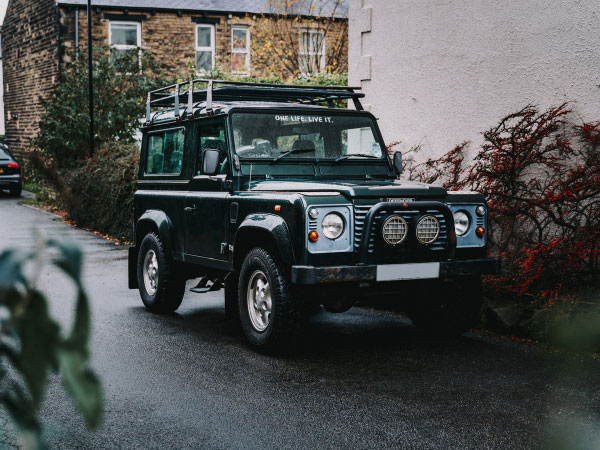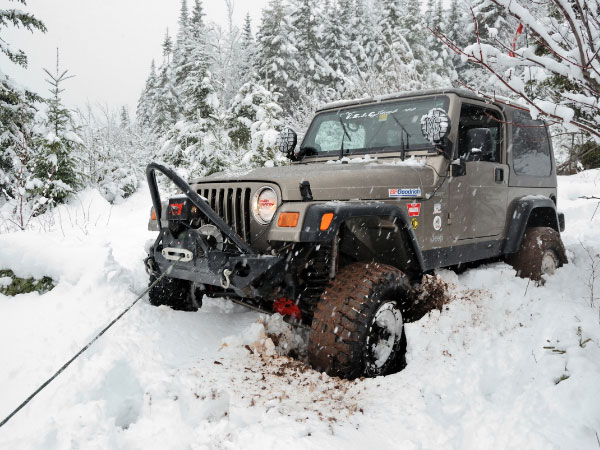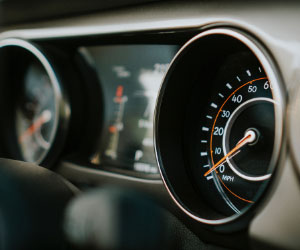Before buying a Jeep Wrangler a lot of people ask how many miles can a Jeep Wrangler last. We all want to get the most value from our money, and having a vehicle that lasts longer than the amount of time it takes to pay it off is a big plus.
Here are several factors that determine how long your Jeep Wrangler will last. The main one is the durability designed into the vehicle. You already know that Jeep creates durable, strong machines that are made to be driven hard, and kept for many years.
Most people know someone with a Jeep that has had that Jeep for ten or more years. That is not uncommon. So just how long does a Jeep Wrangler last?
Average Number of Years a Jeep Wrangler Lasts
In the past people expected every vehicle they purchased to last fifteen or more years. People did not go out and buy new cars very often, and they wanted the ones they bought to last for many years. Most people even passed their older cars down to their children when they did buy new ones.
That is why the Jeep Wrangler is designed to provide service for about twenty years if it is properly maintained. You can expect your Wrangler to be around long enough to pass it down, or if you want to sell it when you get a new one the fact that these vehicles are so long lasting will allow you to get a much higher resale price out of it.
Average Mileage Life of a Jeep Wrangler
The properly maintained Wrangler may show 400,000 or more on the odometer. Most people say that they never had any problems from their Wrangler before they reached an odometer reading of 280,000 miles.
The average number of miles that a vehicle is driven by people who are between 35 and 54 is 15,000 per year. Using that mileage figure the average Jeep Wrangler is over 18 years of age before it begins to give its owners major mechanical problems.
Using that average mileage figure the 400,000-mile Wrangler would be about 26 years old. So, it is possible that the Jeep Wrangler you buy in 2021 could still be functional in 2047.
With durability like that you can say that you are definitely getting your money’s worth out of these vehicles.
How to Improve Jeep Wrangler Longevity

You repeatedly hear that your Jeep Wrangler will last much longer if it is properly cared for. What care is needed to make sure you get the most mileage and service from your vehicle?
Change the Oil Regularly
The best thing you can do for your Wrangler is to change the oil on a regular and consistent basis. The manufacturer recommends that you change the oil and oil filters on the vehicle every 6 months or every 5,000 miles, whichever comes first.
Always use the oil weight that is recommended by the manufacturer. You should always use a high-quality oil, even if the higher quality oil costs a little more. Cheap oils are not made with the same properties and will often break down much faster than the higher-quality products do.
Suspension System
You have to pay attention to your suspension system. The suspension system is responsible for keeping the center of gravity in the right place so your wheels have the proper balance. If you ignore your suspension system your tires will wear out much faster, and there is a good chance that the suspension system will flatten out and let major damages occur on your vehicle.
The majority of manufacturers and licensed mechanics suggest that you have your suspension system inspected by a professional at least every 50,000 miles. If you frequently drive over rough terrain then you will want to have your suspension evaluated by a professional more frequently.
The Transmission
The transmission will need to be maintained and the fluid in that transmission should be replaced every 30,000 to 60,000 miles. If you use your Wrangler to pull a lot of trailers or put it under a great deal of off-road stress then you will want to change your transmission fluid and filter more often.
Spark Plugs
The spark plugs in your vehicle need to be changed every 30,000 miles. This is a common thing that people overlook, and it is also something that can prolong the life of your vehicle.
Belts and Hoses
Your car relies on a series of belts and hoses to function. Belts and hoses can dry rot with age, deteriorate with age and use, and become frayed. When a belt or hose breaks then other problems are introduced. You can even get things under the hood broken when the belt snaps.
To make sure your belts and hoses are functioning properly it is recommended that you change them regularly. Th V-belt needs to be changed every 30,000 miles when you change your transmission fluid is a good time to have your mechanic change the V-belt.
The serpentine belts and timing belt needs to be changed every 50,000 miles. You need to be aware that some engines are designed so that if the timing belt breaks the engine is no longer viable. To avoid this problem, make sure to schedule changes of the belts and keep everything in perfect working order.
Tires
The tires under your vehicle are exposed to every possible hazard. If a tire blows out then your vehicle is exposed to potential damages, and even possibly being wrecked. Driving on tires that are improperly inflated, or that have worn spots on them can cause your vehicle to begin to have other complications.
Reduce having a blow out or being stranded with a flat tire by inspecting your tires on a monthly basis. Take a penny and stick it in between the treads of the tire. If the penny sticks out farther than the tread it is time to start considering new rubbers for your Wrangler.

Brakes
Your Wrangler brakes are what stops your vehicle from a potential accident. You trust those brakes to stop your vehicle and prevent accidents so it is crucial that you maintain the brakes properly.
The manufacturer recommends that brake pads be changed every 20,000 to 60,000 miles. If you drive over rough terrain, through a lot of water, or in circumstances that make you use your brakes more often then have the pads changed every 20,000 miles.
Never Ignore:
- High-pitched screeching
- The sound of metal rubbing against metal
- Brake pedal vibration
- Brakes that do not respond normally
How to Care for Your Soft Top
Clean your soft top regularly using a cleanser like a mild dish detergent and a soft cloth. Never use harsh cleansers because harsh cleansers can weaken the threads and cause damages to the soft top, windows, and other components of the vehicle.
Wax
You may not realize that waxing the exterior of your Wrangler will help to protect it from deterioration. Wax makes the exterior look better, but it also makes it possible for it to shed water and not let moisture penetrate under the top coat of paint.
Waxing buffs over scratches and provides a protective barrier for your vehicle. Rust is your enemy so anytime you can prevent or protect from rust you are prolonging the life of the Jeep.

